This “king of the beasts” is one of the most well-known wild animals in the world. Found mostly in parts of Africa south of the Sahara Desert, lions are a sight to behold, even though most people have never seen one in its natural habitat.
Whether or not you get a chance to see one in the wild, there’s a lot you can learn from this majestic creature. Just check out these fascinating lion facts to see for yourself.
Lions Are Social Creatures
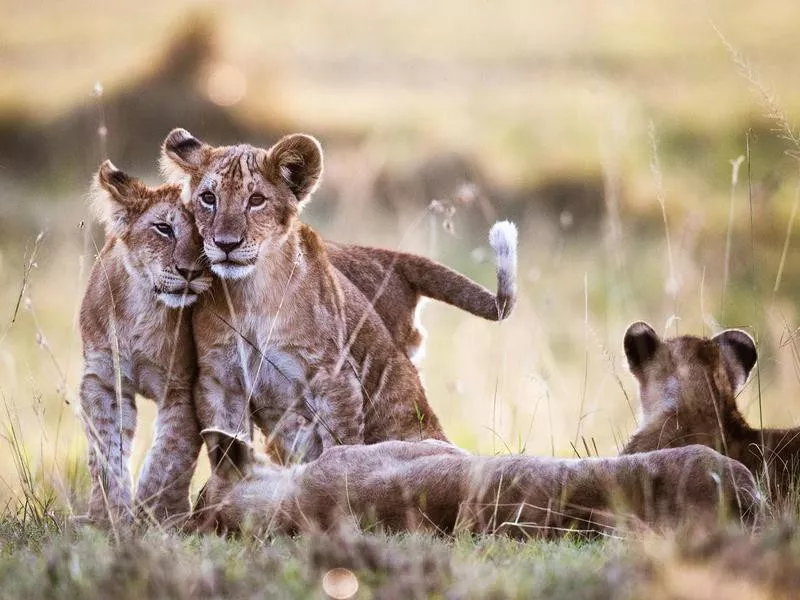
Getty Images
Lions are one of few big cats that live in a group, also known as a pride. They usually consist of two to three males and up to 10 females who live together with their young, although there have been as many as 40 in one group.
In some rarer subspecies, they divide themselves by gender until mating time.
The Lion Is Endangered
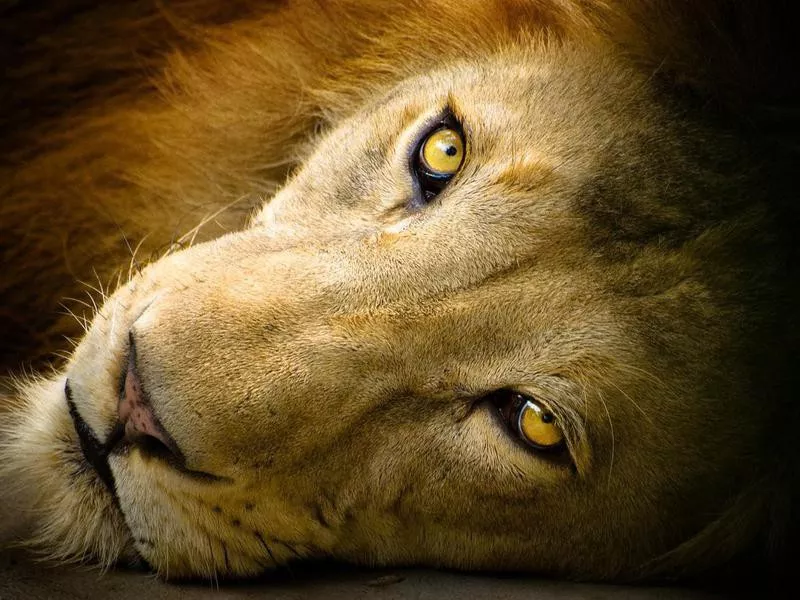
Getty Images
Over the last century, the lion population has declined by a whopping 90 percent. While they are native to Africa, they are extinct in 26 countries across the continent. The International Union for the Conservation of Nature (IUCN) Red List of Threatened Species lists them as vulnerable.
However, in some parts of Africa, they are classified as “critically endangered” because their populations are declining rapidly due to the illegal wildlife trade, poachers and trophy hunting.
Lions Are Very Loud

Unsplash
Of all the big cats in the world, the lion has the loudest roar. It can reach 114 decibels — about as loud as a leaf blower.
Some lion vocalizations can be heard up to 5 miles away.
The Lion’s ‘King of the Jungle’ Nickname Is Not Accurate

Getty Images
While the lion is known as “the king of the jungle,” lions don’t actually live in jungle or forest areas. They live in grassland, savanna, dense scrub and open woodland.
They like to be able to see the landscape around them to locate and stalk prey. A dense forest or jungle does not allow for this view.
Lions Are Big Sleepers

Getty Images
While there are some animals that need very little sleep, lions need a lot. In fact, they sleep up to 21 hours a day.
As predators, they are not constantly worried about their safety. They do not have sweat glands, so they reserve their energy in high heat for the hunt at night.
Their Dark Mane Gives Their Attributes Away
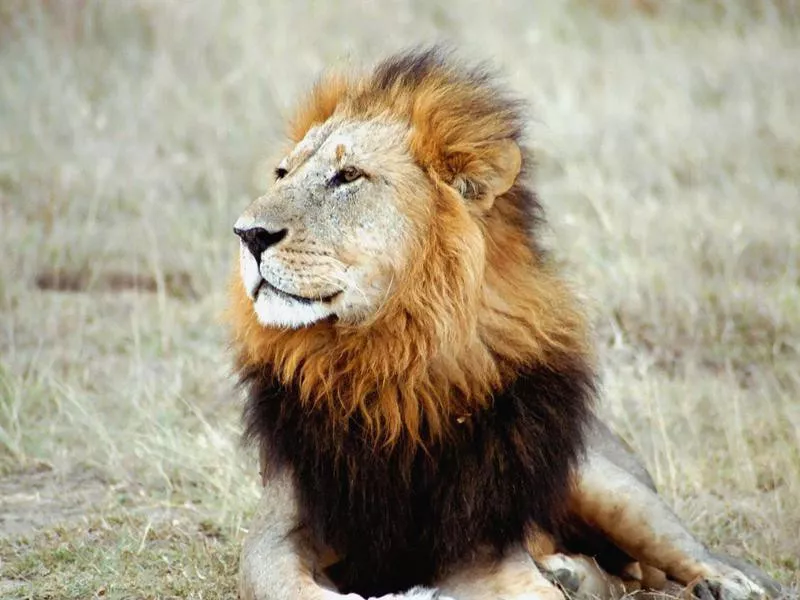
Getty Images
Male lions begin to get their manes at about two years. As they age, their manes get darker. A full, black mane indicates a powerful lion. The older they get, the darker it gets, and the thicker it is, the more well-fed and healthy the lion is.
Conversely, it will lighten on a sickly lion. It is, therefore, no coincidence that females prefer darker manes.
They Only Live in Africa. Or Do They?
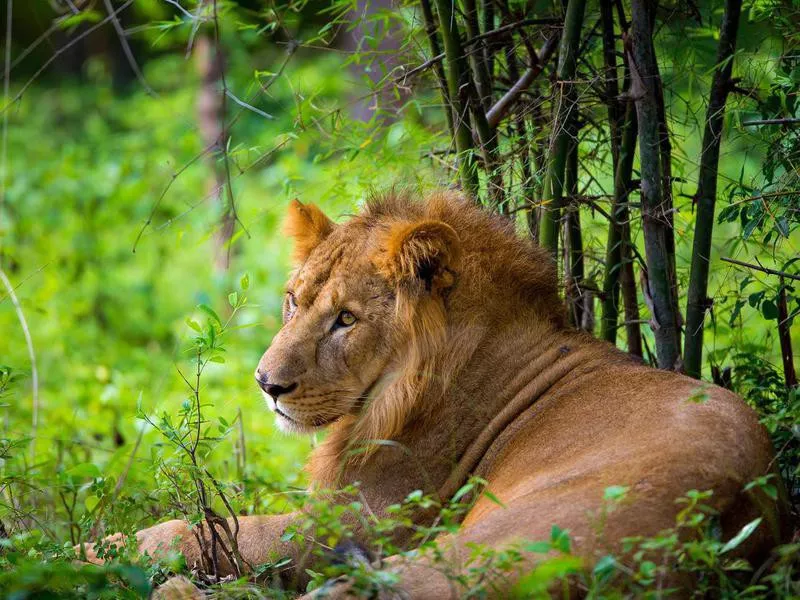
Getty Images
Believe it or not, lions are not only found on the African continent. There is a small population of lions in Gir National Park in India, the only other area where lions live on the planet.
Due to its breeding program, the Asiatic lion population has gone up from 177 in 1968 to 674 in 2020.
Lionesses Are Communal Mothers
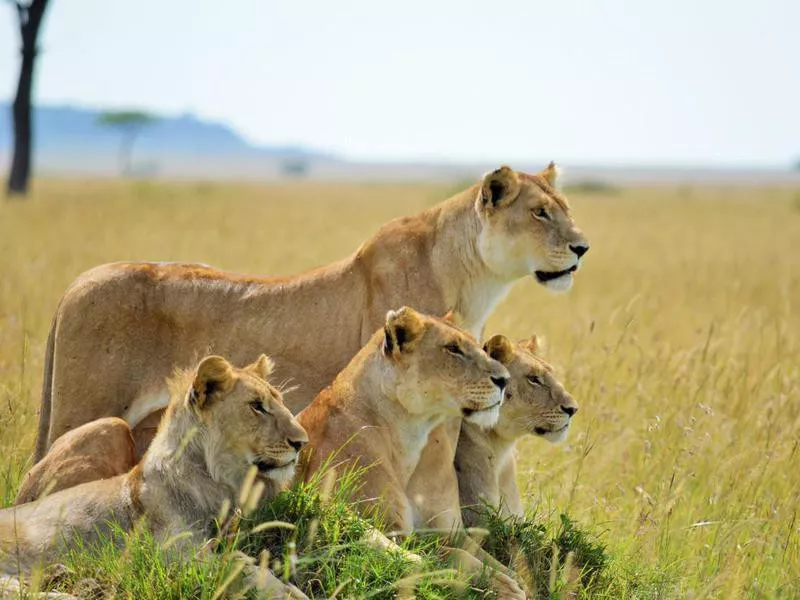
Getty Images
In a pride, many of the females give birth at the same time. With cubs of a similar age, lionesses communally care for each other’s young, which includes nursing them.
They do this for about two years and force all the males and some of the females out, at which point they usually find another pride. If they don’t, they don’t live very long.
Lions Don’t Really Have a Discerning Palate
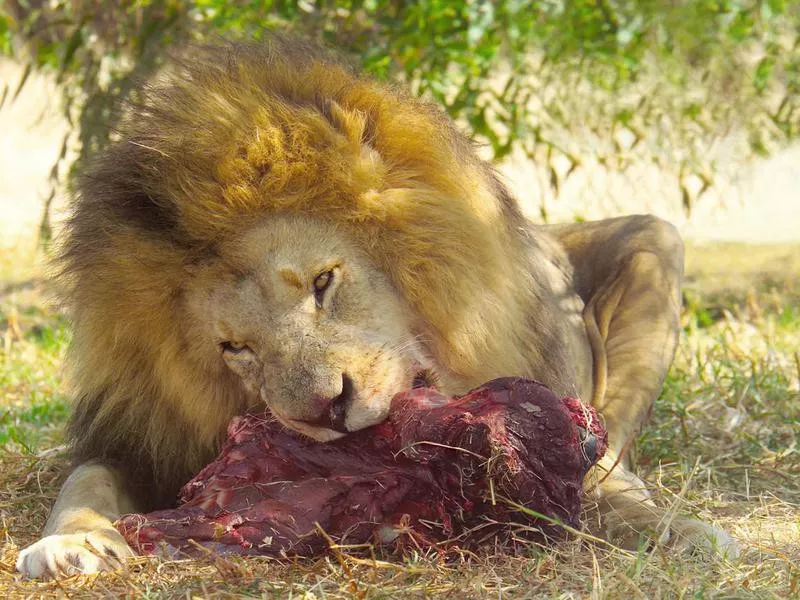
Getty Images
As carnivores, lions will eat many species, including rodents, baboons, buffalo, hippos, wildebeests, zebras and antelopes. They also eat fresh kills and carrion scavenged from other animals like hyenas, cheetahs and wild dogs.
Lionesses do most of the hunting, and the males are fed from their kills.
Lions Can Eat 25% of Their Body Weight in 1 Meal
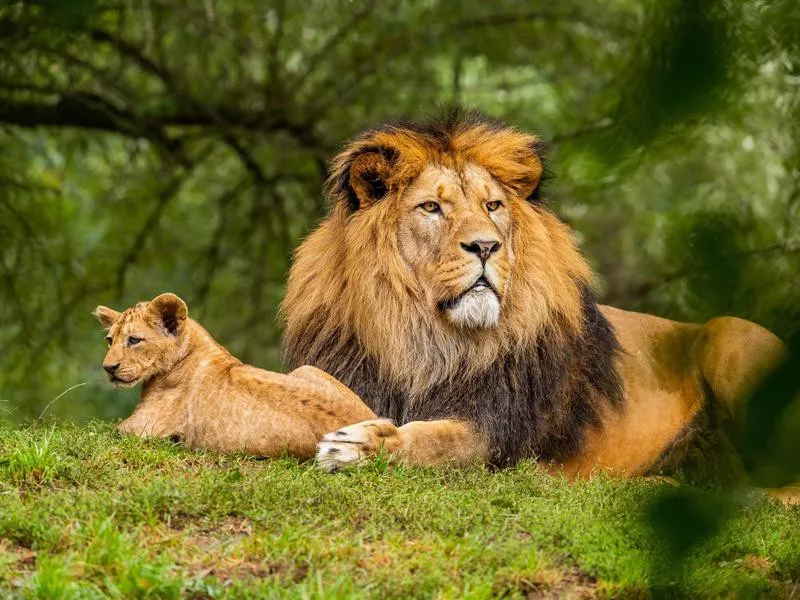
Zden?k Machá?ek / Unsplash
Lions, as you might guess, are big eaters.
In fact, they can eat up to 90 pounds (or a quarter of their body weight) in one sitting.
There Are More Than 1 Type of Lion

Getty Images
While there is only one species of lion (Panthera leo) there are seven subspecies. They are: the Katanga lion (Southwest African lion), Congo Lion (Northeast Congo lion), Transvaal Lion (Southeastern lion), Barbary lion, Nubian Lion (East African lion), Asiatic lion and the West African lion.
All are in danger of extinction.
They Don’t Need to Drink Every Day
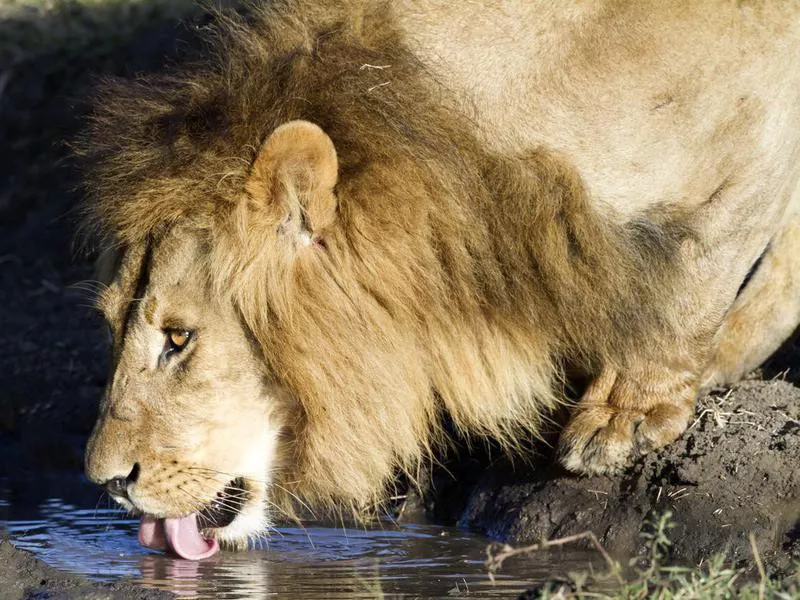
Getty Images
Lions will drink daily if water is available. If it isn’t, they can go without it for days or even weeks.
They get the moisture they need from the fluids of their prey. They can also conserve hydration by resting during the daytime.
They Once Lived in Europe and the Americas

Unsplash
Lions weren’t always only on the African continent. The Eurasian cave lion (Panthera leo spelaea) lived around Europe and Asia 370,000 years ago, while the American lion (Panthera leo atrox) lived from the Yukon to Peru 340,000 years ago.
Both were larger than the modern lion, and both went extinct around 11,000 years ago.
Lions Cubs Have Spots

Unsplash
When they’re cubs, lions have spots. They are born with a greyish, woolly coat, and their spots act as camouflage, allowing them to blend into bushes and long grasses.
When they are about 3 months old, the spots begin to fade, but some do keep them, even into maturity.
They Are the Second Largest of the Big Cats

Unsplash
There is only one big cat whose size dwarfs the lion’s. That’s the tiger, which can reach almost 13 feet in length and weigh up to 700 pounds.
Lions are considerably smaller, between 6.5 and 11 feet in length and weigh up to 500 pounds.
White Lions Are Rare, but They Do Exist

Unsplash
In South Africa, Timbavati Game Reserve’s white lions are believed to have been in the area for centuries, but they are so rare, the earliest recorded sighting was fairly recent — in 1938.
These white lions aren’t albino — the color of their fur is caused by leucism, a recessive trait. They were thought to be extinct until 2004, but they continue to hunt and breed successfully in the wild.
They Are the Only Big Cats With Tasseled Tails

Unsplash
A lion’s tail helps it balance, while its dark tip is used like a beacon to lead other lions through tall grasses. Females may raise their tail to show cubs where to follow.
Their tales also allow them to communicate the location of their prey while hunting.
Lions Are Fast Runners, but Not for Long
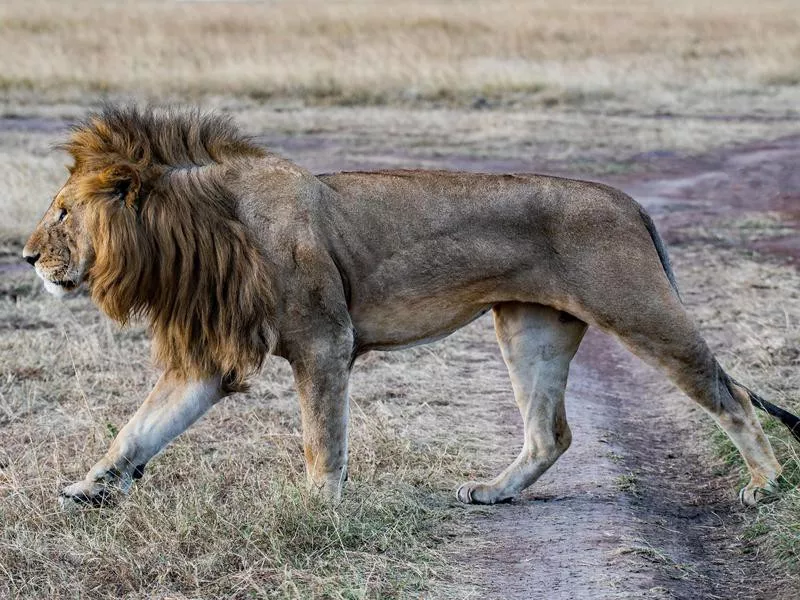
Unsplash
With a top speed of about 50 miles per hour, the lion is the fastest of all the big cats. However, it can only manage these speeds in small bursts.
Because of this, they need to stay close to their prey and work together to ensure hunting success. They can also leap up to 36 feet.
Many Lions Don’t Survive After Leaving the Pride
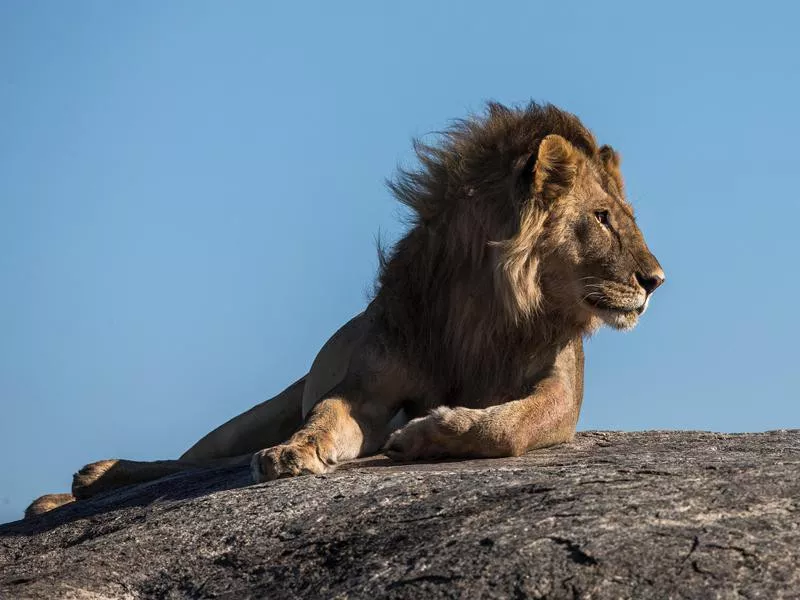
Unsplash
Just one in eight male lions survive into adulthood. When they begin to reach maturity, they are kicked out of the pride, while the females usually stay behind. They roam by themselves or with other “orphans,” and at this point, they are extremely vulnerable.
They may take over a new pride but will have to fight other males to the death to do that.
Lions Have Keen Eyesight
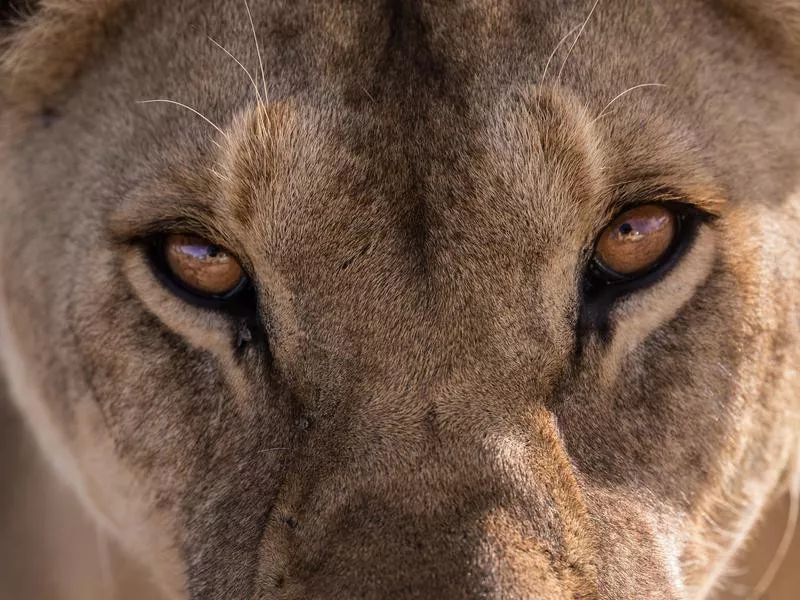
Unsplash
At night, lions can see six times better than humans due to the coating behind their eyes that helps capture and reflect moonlight.
The white fur under their eyes helps make the reflection even brighter, which allows them to spot and stalk prey much easier.
Lions Can (and Do) Attack Humans
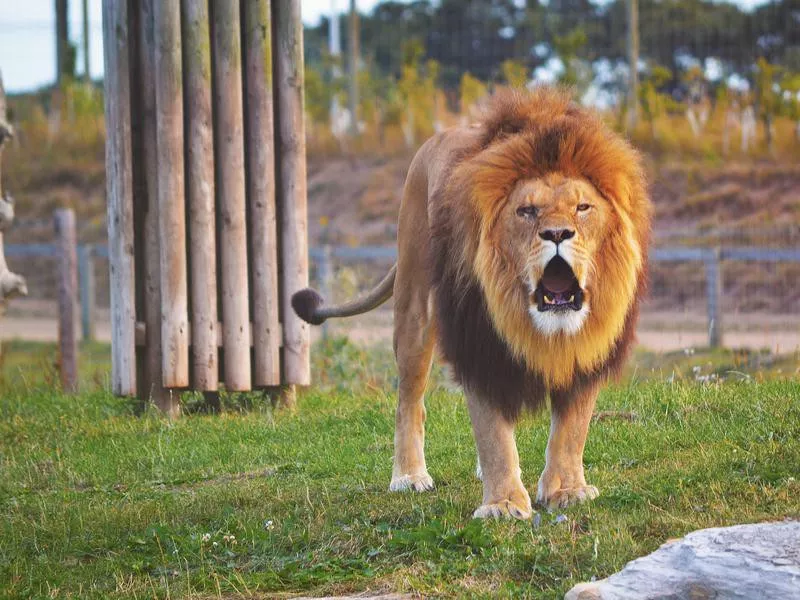
Getty Images
Humans are not off limits to lions when it comes to prey. Conservation scientist Luke Dollar says they are not to be underestimated in this regard: “Almost any organism around lions might be a potential prey item, and for people to think that they are an exception is folly.”
Tanzania alone has seen 593 deaths and 308 injuries from lions between 1990 and 2004.
Lions Don’t Live Very Long
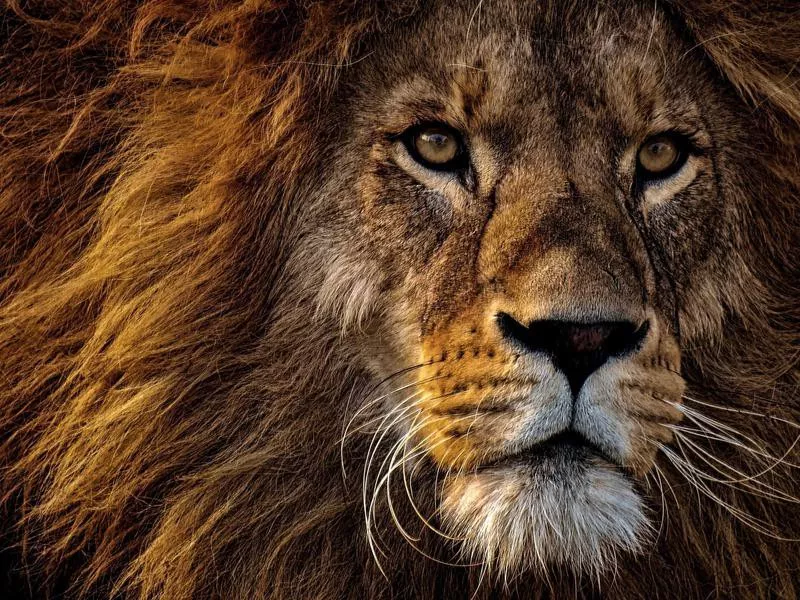
Unsplash
Surprisingly, lions live about as long as or a little less than the average housecat. Lionesses can live to about 16 years old, but males only live up to 10 years.
In captivity, however, they can live 25 years or even longer, due to being consistently well fed and living in a different pride structure that separates young lions from older individuals.
A Hollywood Actress Once Lived With a Lion
In the 1960s and 70s, actress Melanie Griffith had a pet lion named Noel. Her mom, Tippi Hedren and step-father Noel Marshall, were animal activists who wanted to make a film to raise awareness about the endangered status of lions. Melanie was even allowed to sleep next to the beast.
A trainer taught the family how to act around the lion, which meant not making any spontaneous movements or turning their backs.
The MGM Lion Has Opened Its Movies for Decades
The famous MGM lion was a real animal. Dubbed “Leo the Lion,” this movie mascot has opened every MGM film since 1929. Eight lions were used to create this iconic, roaring logo (the first lion, named Slats, did not roar.)
The last of the eight, actually named Leo, has been used in some form since 1957. In 2021, Leo appears as a CGI lion that is based on real footage of him from the 1950s.
A Lion’s Claws Protract
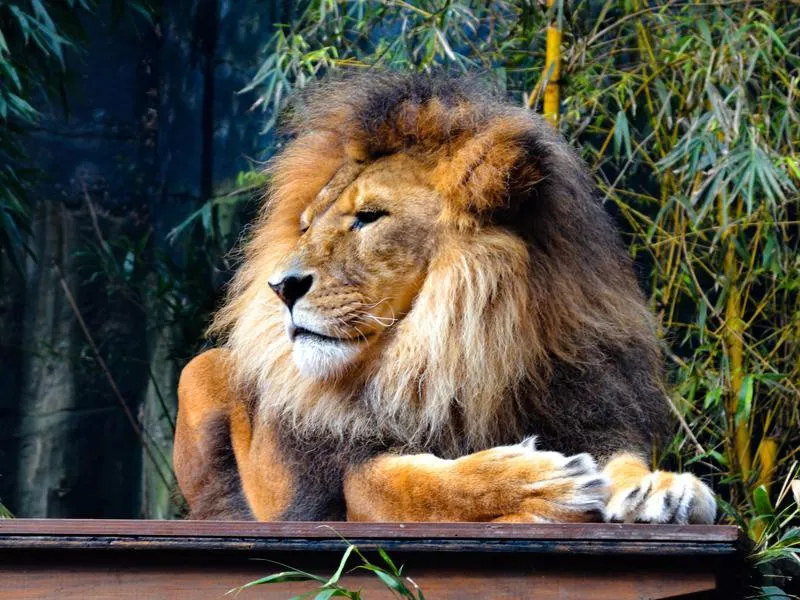
Unsplash
A lion’s claws aren’t permanently extended. In fact, they are retracted within the paw when the animal is relaxed. Elastic ligaments and tendons create sheaths to hold and protect them from the wear and tear that comes from walking.
When a lion is ready to hunt, it straightens its claws like blades from their sheaths.
It’s Unclear If the Romans Really Fed Christians to the Lions
There’s no proof that Christians were singled out as food for lions. However, Romans were known to feed people in general to the big cats, so chances are some Christians met their end in that way.
There is record of Romans sentencing prisoners to ad bestias or execution by beasts, which also included dogs, bears and boars.
Lions Cannot Move Their Eyes
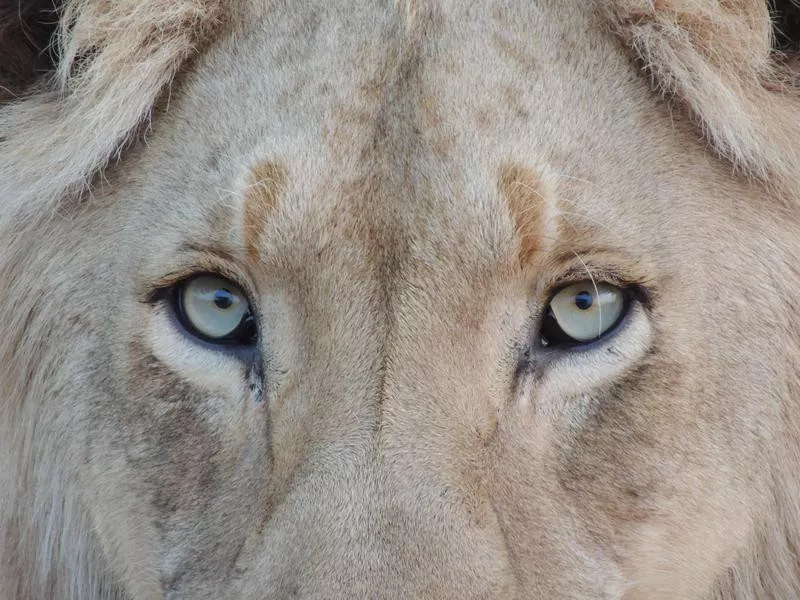
Unsplash
You’ll probably never see a lion’s eyes dart from side to side. While their pupils are three times bigger than those of a human, they cannot see well peripherally.
When they want to look at something, they have to turn their whole head to see it.
One Lion Remembered His Caregivers Years After His Return to the Wild
In 1969, Ace Bourke and John Rendall bought a lion cub named Christian from a London department store. It lived with them until it grew too big and was returned to the wild in Kenya.
Years later, when they went to find Christian in his new home, he not only remembered them, he greeted them by jumping into their arms. On at least one visit, he even introduced them to his pride. The video of their reunion was one of the first videos to go viral on YouTube and has been watched more than 13 million times.
A Lion Named Cecil Put Trophy Hunters in the Spotlight
In 2015, a lion known as Cecil was living in Zimbabwe’s Hwange National Park and was well known for being fearless and allowing tourists an up close and personal view of his life in the wild. He was also tagged with a GPS tracking device as part of Oxford University study.
You would think this made him safe from trophy hunters, but it did not — he was lured away from his home and killed by an American dentist named Walter Palmer. His death went viral and put the focus on the decimation of the lion population by sport hunters. Of the 62 lions tagged in the study, 24 have been killed in this way.
Some Female Lions Have Manes
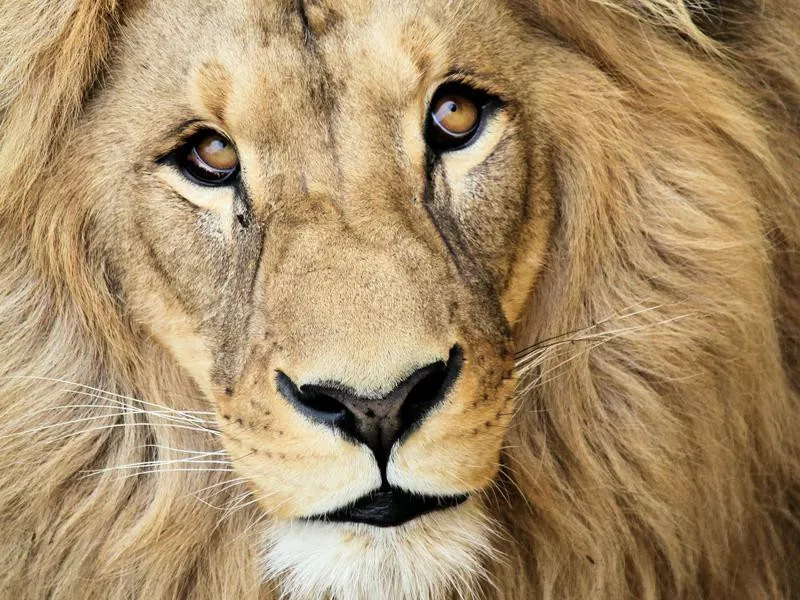
Unsplash
In Botswana’s Moremi Game Reserve, there are lionesses with thick manes and deep, bellowing roars that visitors easily mistake for males. This is due to high levels of testosterone, according to conservationist Luke Hunter, who said that they are likely infertile as a result.
Despite this, they live long, healthy lives, and because they are thought to be males, they may be an asset in protecting their pride.
A Lion’s Tongue Can Lick the Flesh from Skin
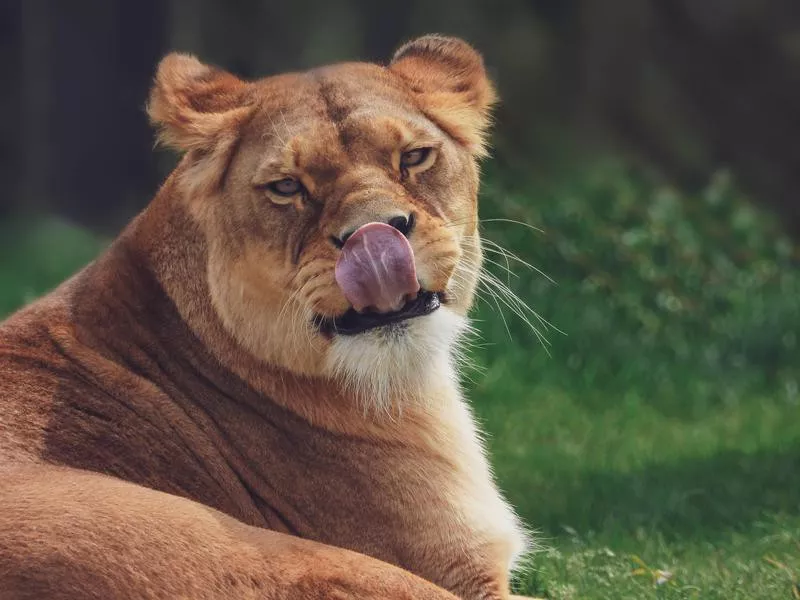
Unsplash
Everyone knows what a domestic cat’s tongue feels like — it’s a little rough, like sandpaper. Imagine that on a much larger scale!
A lion’s tongue is covered with papillae, sharp spines that can lick the flesh from any animal. It also tenderizes meat with its saliva to jump start the digestion process before the lion even begins eating.
Mountain Lions Are Not Lions

Mountain lions are the largest of the small cats and, as such, have more in common with domestic felines than they do with lions. Spanish explorers to the New World called this wildcat a “leon” (lion) and “gato monte” (cat of the mountain), hence the name.
There were lions in the Americas at one time, but they went extinct thousands of years ago.
A Lion’s Whiskers Are Like a Fingerprint

Unsplash
The pattern of a lion’s whiskers is unique to the animal — no two are the same. Conservationists in Kenya are now using this identifying marker to keep an eye on them by building a database of their movements.
With only about 2,000 left in the country, scientists hope to have a greater understanding of their day-to-day lives and how to keep their numbers from dwindling any further.
Lions Can Travel Many Miles for Food
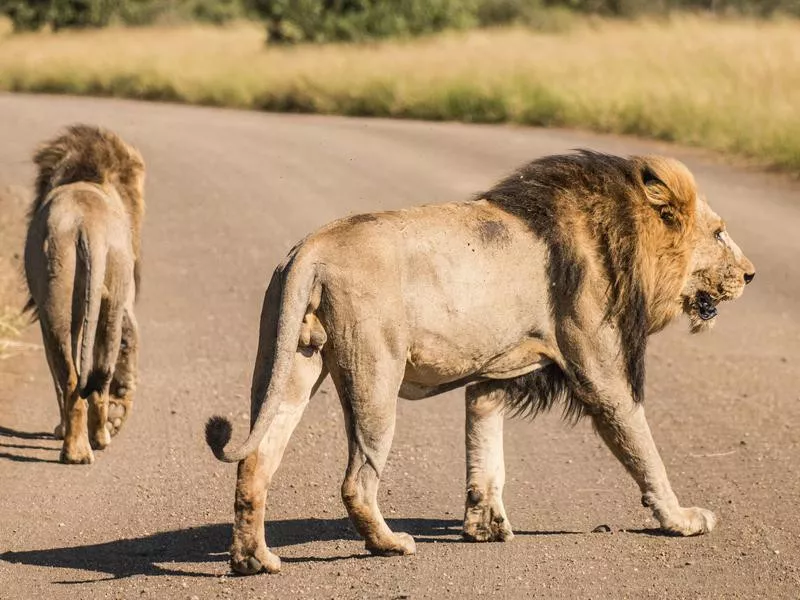
Unsplash
Prides usually have a well-defined territory with a core location that they defend against other lions; beyond it, they tolerate some overlap. If there’s enough food in the area, their territory may be small — about 8 square miles. If there isn’t, it may be up to 150 square miles.
Prides can pass territories from older females to females and stay in the same area over decades.
The Liger Does Not Exist in the Wild
A liger, a cross between a female tiger and a male lion, does not happen naturally. They only exist in captivity, as their habitats of these species do not overlap.
About 30 exist in the U.S. today and were thought to be sterile, but some have produced offspring.
Baby Lions Are Often Born Around the Same Time
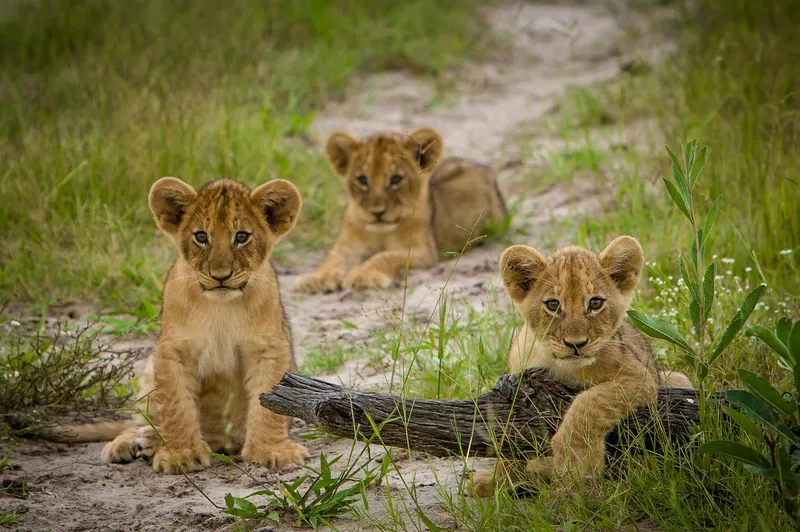
Ryan Green / Getty Images
Most of the time, lionesses in the same pride have cubs at about the same time. This isn’t much different than best friends or sisters having kids at the same time. It provides a sense of community support.
Raising cubs in a group also helps keep them safe from predators, like other large cats.
Lionesses Can Hold Off Giving Birth
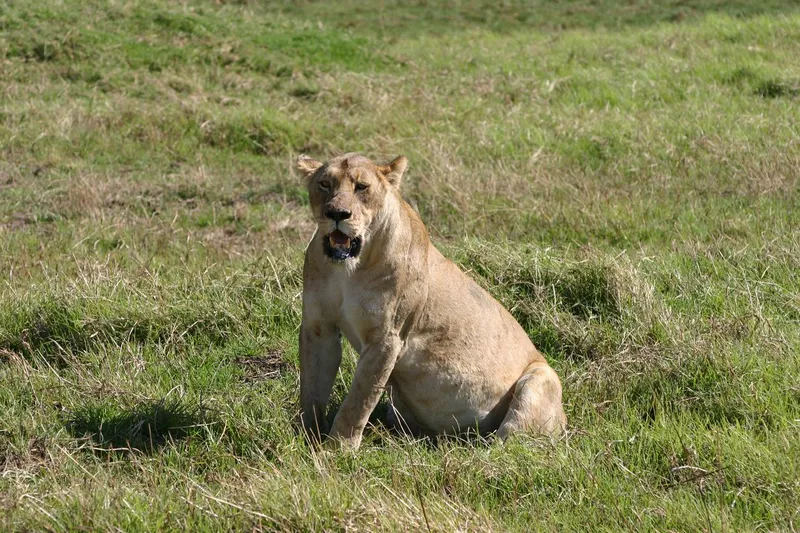
Africanway / Getty Images
In addition to having cubs at a similar time to other lionesses in the pride, mother lions can put a pin in the childbirth process, if necessary.
If food is scarce or danger is afoot, they will wait until a safer moment arises to welcome their little one into the world.
Lion Cubs Are Born Without Teeth
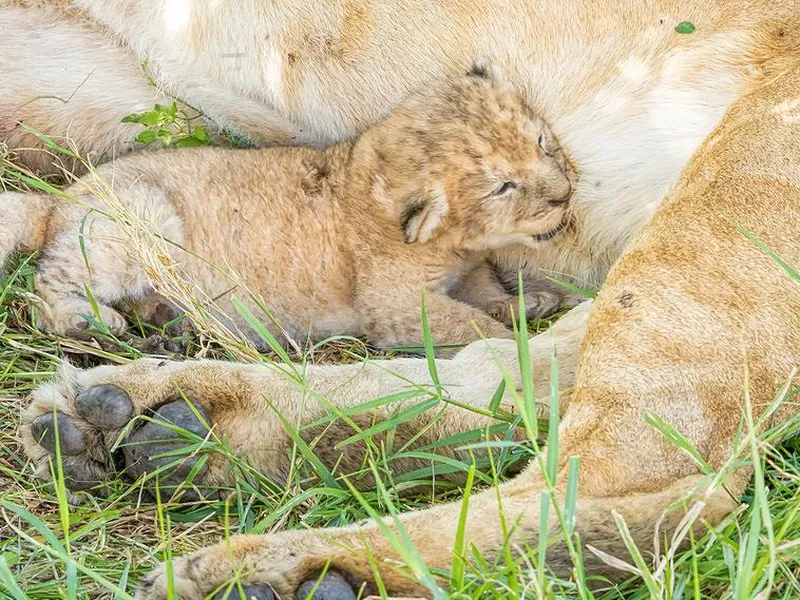
1001slide / Getty Images
Lions are completely helpless at birth. They have no teeth and are completely dependent on their mothers, but they develop similarly to humans and other mammals.
They begin teething by the time they reach two or three months of age, at which point they can start eating meat. These milk teeth are later replaced with larger adult teeth.
Lions Reach Maturity Around the Age of Two
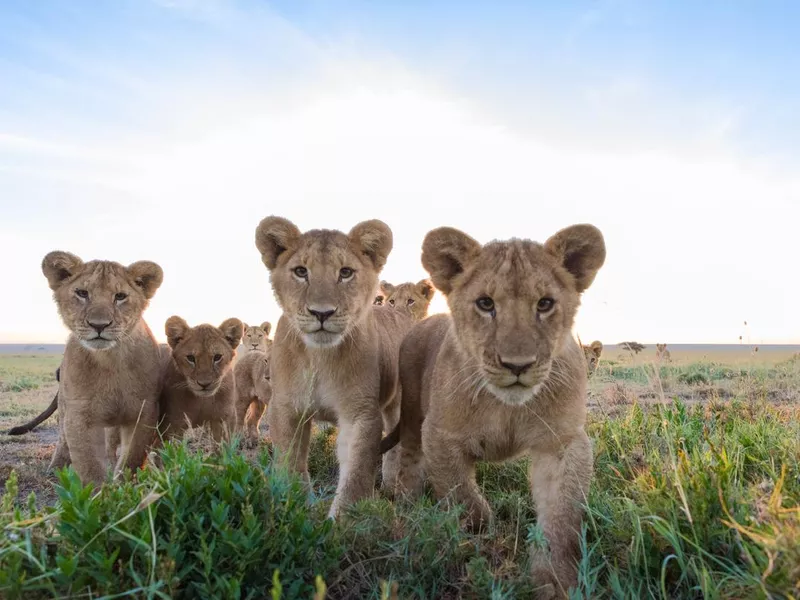
jeniffer collee / Getty Images
Cubs are weaned by around six months old. By the time they’re two, they can survive independently from their mothers. By the time they’re three or four, they’re ready to start having cubs of their own.
Playing Is Part of Learning to Hunt
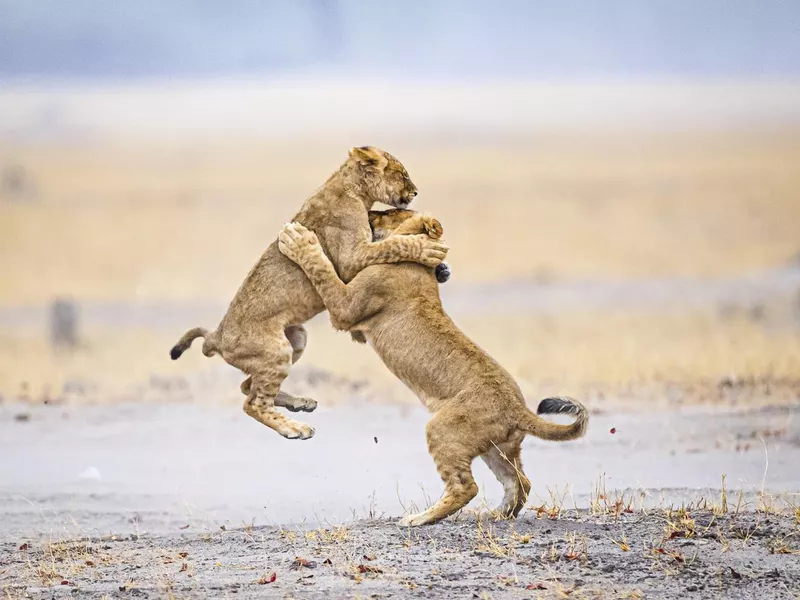
Dennis Stogsdill / Getty Images
Lion cubs have tons of energy, and just like kittens, they love to play. Roughhousing is about more than having fun, however. Their pretend stalking and pouncing habits are practice for hunting when they grow up.
It also helps them to form social bonds with other members of the pride.
Male Lions Sometimes Kill Cubs
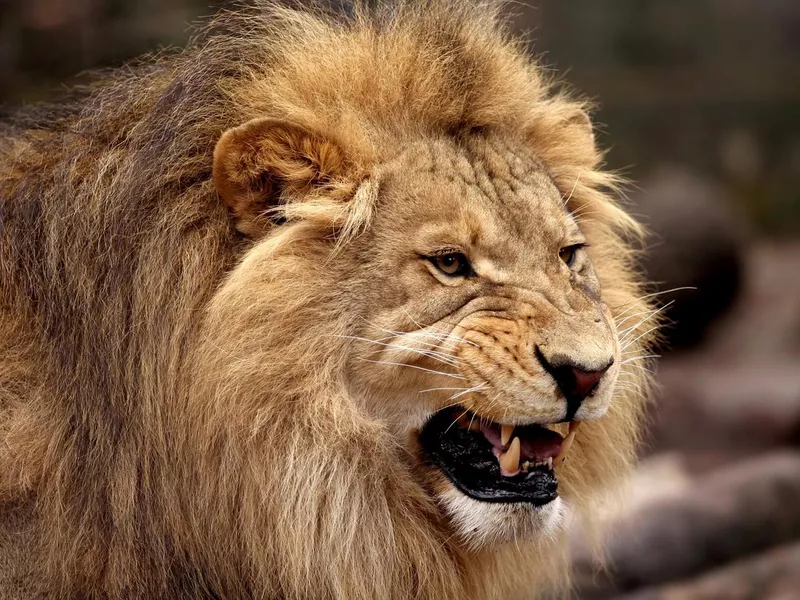
skynesher / Getty Images
Being a lion cub is risky business. When male lions take over a pride, they often kill cubs to make sure the females are ready to mate sooner. This also ensures that the males can pass on their own genes.
Male lions usually chase away male cubs when they mature to avoid having to compete with them for lionesses.
Lionesses Can Give Birth to Up to Six Cubs at a Time
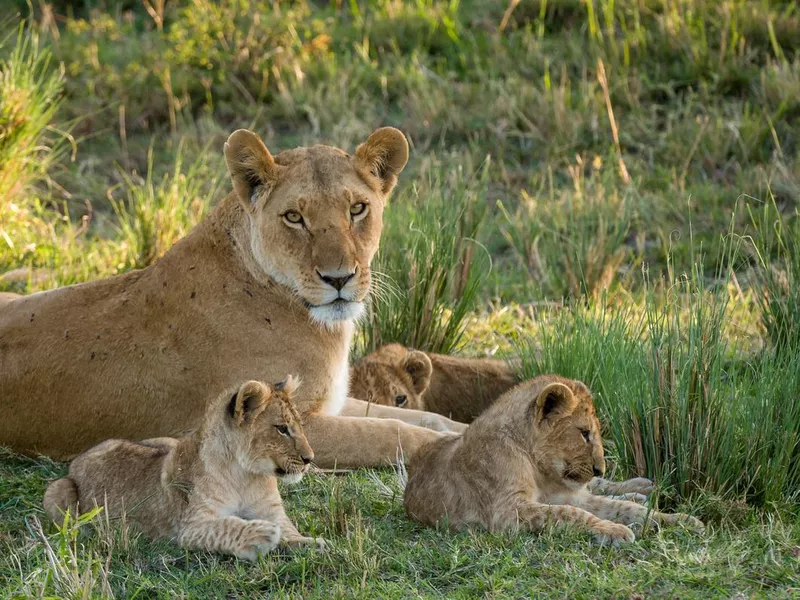
elmvilla / Getty Images
Lionesses don’t carry babies for nearly as long as people do. The gestation period is about 108 days, a little over three months, and the litter size varies substantially.
One to six cubs is normal, with two to four being the most common.
Lion Cubs Are Hidden Away for Up to Two Months

skynesher / Getty Images
Lionesses often shelter their cubs away from the pride during their earliest days. This is both for bonding purposes and to protect them from larger males until they’re more capable of fending for themselves.
Lionesses Feed Each Other’s Cubs

Riaanvdb / Getty Images
In addition to having cubs at around the same time, caring for the cubs is a group effort.
Lionesses aren’t stingy about which cubs they feed. They automatically care for any cubs around the same age as their own, including nursing them.
Male Lions Aren’t Involved Parents

WLDavies / Getty Images
If you’re looking for an example of a loving father figure, don’t look at lions. African male lions play little paternal role. They don’t bother trying to share food with their cubs, and male lion cubs are driven away when they reach young adulthood.
As harsh as that sounds, there’s a good reason for it. If cubs didn’t branch out to start their own pride with other lions, inbreeding would likely result.
Eventually, the lack of genetic diversity would weaken the species.
Most White Lions Don’t Have Albinism
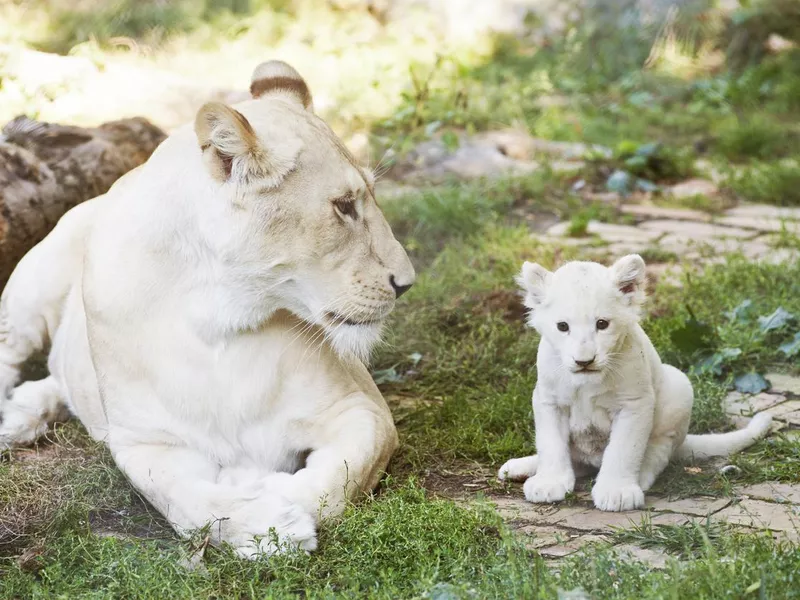
Vesnaandjic / Getty Images
Contrary to popular belief, most white lions aren’t actually albinos. Albinism is a condition in which an animal produces no pigment at all, resulting in pinkish eyes and colorless fur.
White lions simply have reduced pigmentation, with blue eyes and white fur instead of brown and gold.
While white lions are a natural phenomenon, their rarity has made them a prime target for hunters.
Lions Can Weigh Over 500 Pounds
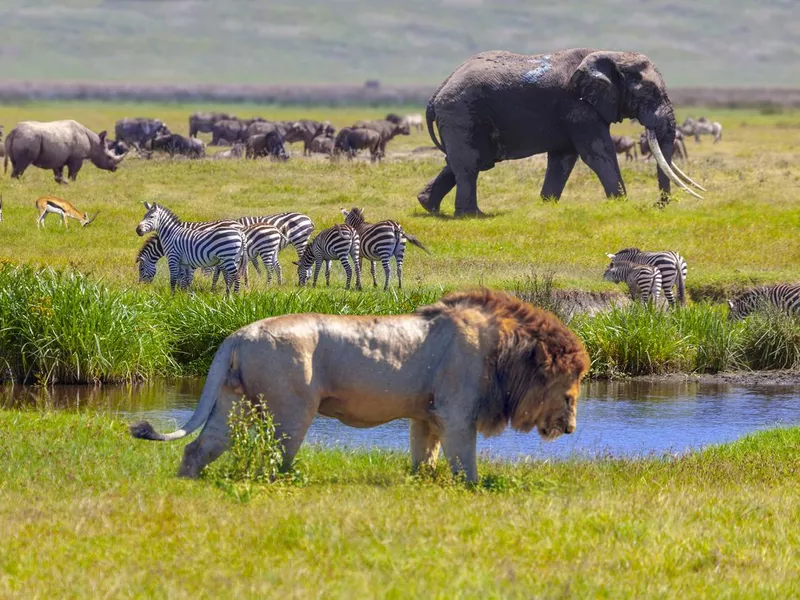
ugurhan / Getty Images
Male lions are much bigger than females, but they’re both massive, muscular hunting machines.
A male can reach up to eight feet in length, while a female rarely tops five and a half feet.
Females can weigh up to 400 pounds, while a large male can occasionally top 570 pounds.
A Lion’s Mane Has Multiple Purposes

Gunther Fraulob / Getty Images
The long, lush mane of male lions isn’t just for looks. While a full mane does help attract mates, manes also provide protection during fights with other males.
Violent disputes aren’t uncommon, usually fought over territory and breeding opportunities.
Female Lions Do Most of the Hunting
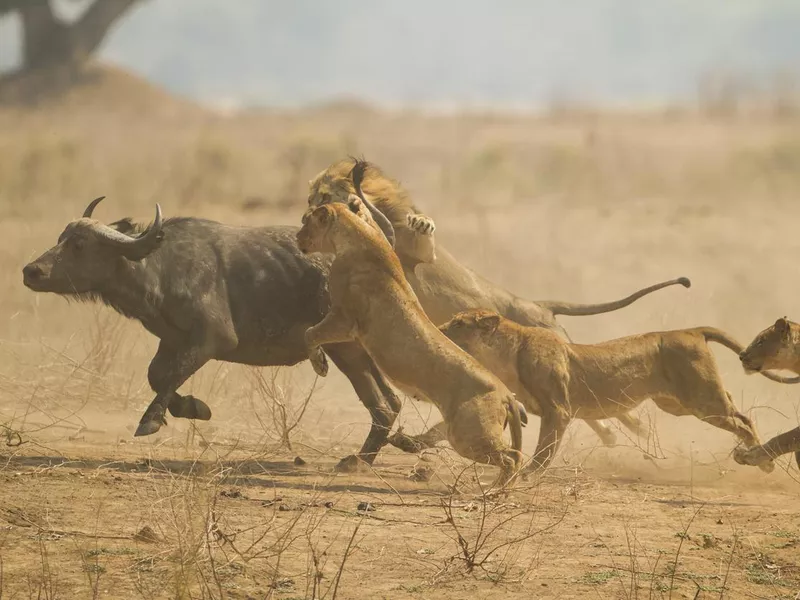
jez_bennett / Getty Images
Male lions might be larger, but female lions do the brunt of the work. They do most of the hunting, and they can cover a remarkable amount of ground in mere seconds.
If you’re standing at the end of a football field, a lion at the other side could reach you in just six seconds.
While Male Cubs Leave the Pride, Females Stay for Life
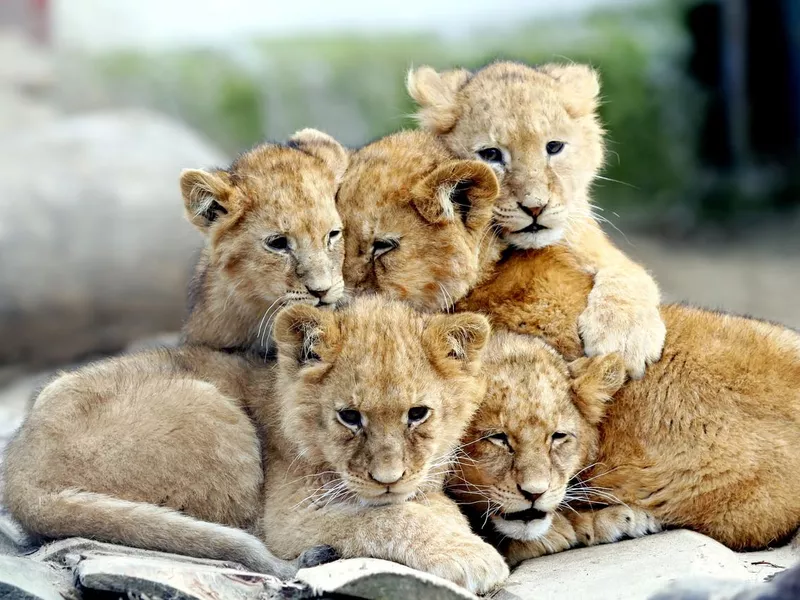
skynesher / Getty Images
Females are much more closely bonded with each other than male lions are. While males go off on their own when they reach maturity, females usually remain with their pride forever.
Young adult males typically stay together until they’re large enough to take on older males and potentially take over neighboring prides.
The Size of a Pride Depends on Prey Availability
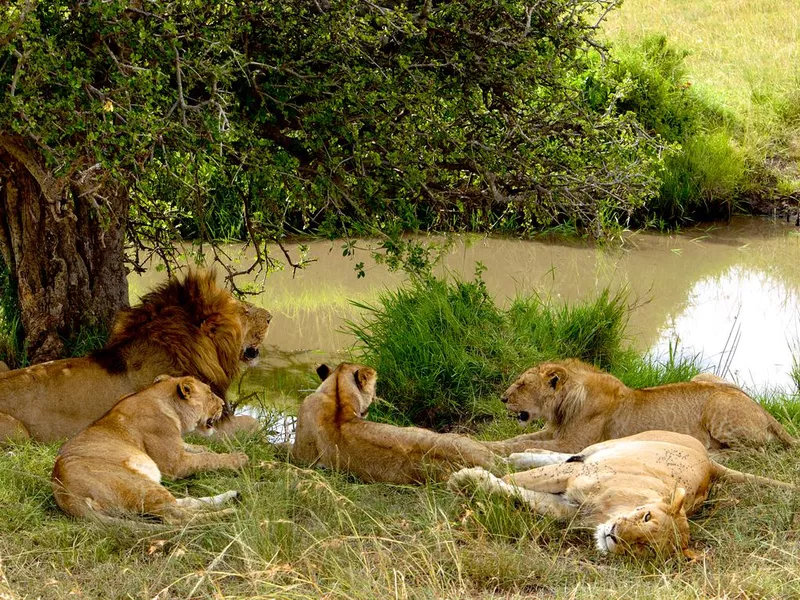
ChandraDhas / Getty Images
Prides can be as small in numbers as three or as large as 30.
Environment plays a huge role in the size of a pride. If there’s less food and territory available, prides are automatically smaller.
Areas with plentiful prey almost always host larger lion prides.
African Lions Used to Have 92 Percent More Territory

Fabian Gysel / Getty Images
Habitat loss has dramatically affected lions in the wild. As humans have expanded their own territory, they’ve also encroached on lion territory. Lions are currently living on roughly 8 percent of the land they used to roam.
The isolation and division of prides make it more challenging for lions to successfully breed. It’s also more difficult for lions to find prey than it used to be.
The Illegal Wildlife Trade Is Only One Threat to the Lion Population

MoreISO / Getty Images
In addition to habitat loss, conflicts with humans are a major problem. Lions are dangerous predators. When they wander into human settlements in search of food, they’re often killed to protect livestock.
The illegal wildlife trade also remains a threat, as lion bones have become a popular ingredient in certain holistic (and ineffective) medicines.
Lions Aren’t Endangered, but They Are Vulnerable
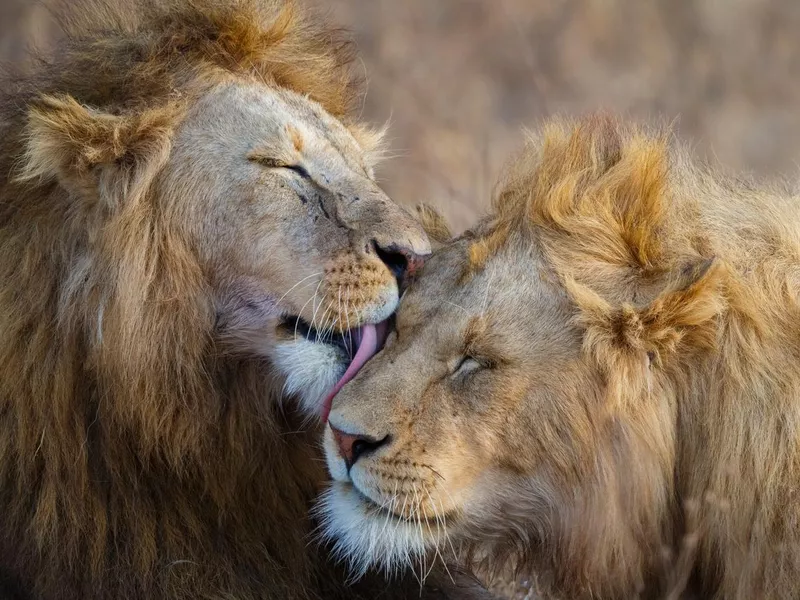
Kenneth Canning / Getty Images
While lions aren’t yet endangered, 75 percemt of African lion populations are in decline.
Only about 20,000 lions live in the wild today, and the IUCN has listed them as vulnerable.
There Are a Few Tricks to Determine a Lion’s Age

jay savaliya / Getty Images
Determining a lion’s age just by looks is tough, but there are a few ways to generate a rough estimate. The darker the lion’s nose, the older the lion is likely to be.
Males also tend to develop a mohawk with age. Scars, stained teeth and a droopy lower lip are indicators that a lion is a senior citizen as well.
Lions Are Blind at Birth

Helen Kinuthia / Getty Images
Although lions mature much faster than humans do, they’re almost more helpless at birth. Human newborns can’t see particularly well, but lion cubs don’t open their eyes at all until they’re at least two weeks old.
It takes another week or so for their vision to sharpen to normal levels. In these first few weeks of life, they’re at their most vulnerable.
Lions and Domestic Cats Are Surprisingly Similar
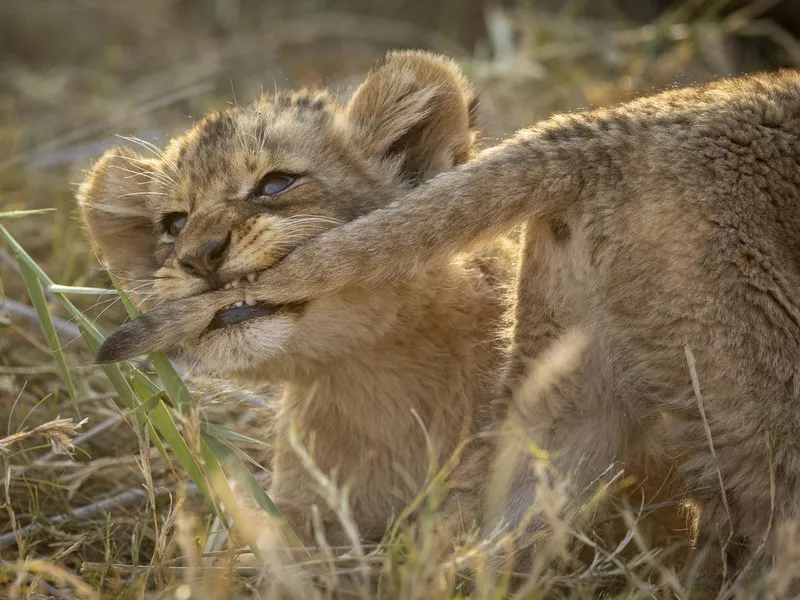
StuPorts / Getty Images
Ordinary house cats and lions aren’t all that different, biologically speaking. Their bone structure and organs are almost identical, except a lion is about 20 times larger. (Not to mention much more likely to eat you for lunch.)
Lions also have round pupils, while cat eyes contract into slits in bright conditions.
Lions Can’t Purr
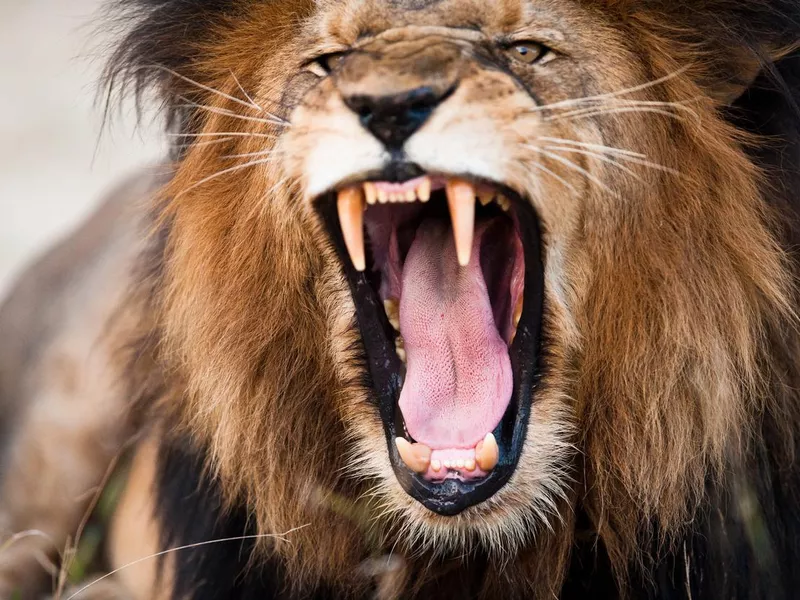
3dan3 / Getty Images
Cats can’t roar, and lions can’t purr. While the two cats are similar in a variety of ways, the structure of their throats is quite different.
Lions have a rigid structure in their throats that enables roaring, but prevents the soft purring pet cats make.
Lions Couldn’t Be Vegetarians if They Tried
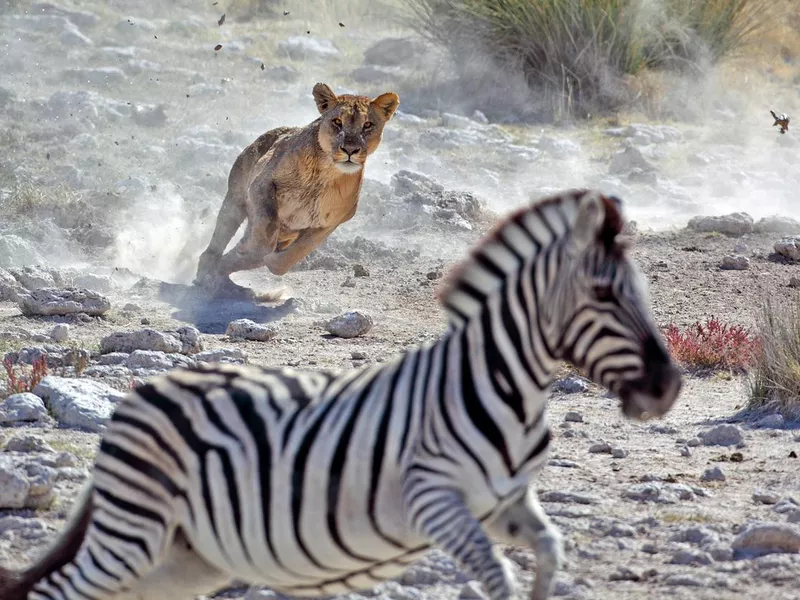
MogensTrolle / Getty Images
Even the tamest lion in the world could never be a vegan. Feeding them a diet without meat would slowly kill them.
That’s because their metabolisms are so high, and their bodies are so muscular, that they need a massive amount of protein to survive. Without it, their bodies begin to break down muscle, weakening them rapidly.
Just Like House Cats, Lions Love Catnip

Chris Drahos / Getty Images
Despite being ruthless carnivores, lions really do have a lot in common with small cats. They’re playful, enjoy boxes and adore catnip. Yep, catnip works just as well on lions as it does in domestic cats.
The reaction is tied to an oil called nepetalactone that’s found in catnip and similar plants. Some lions react to it more than others, but many of them go crazy for it.